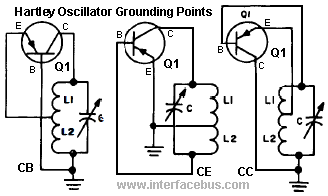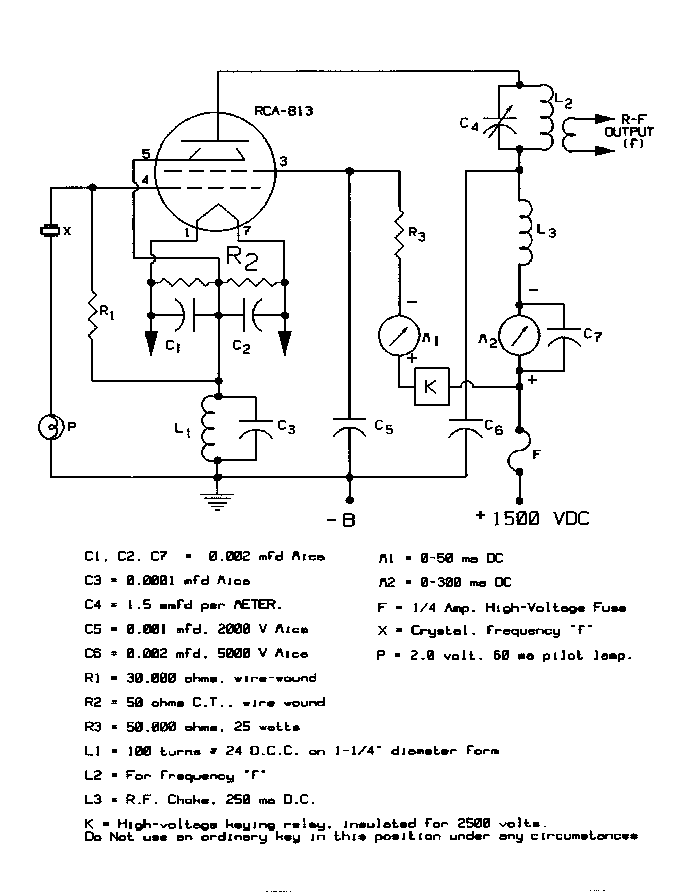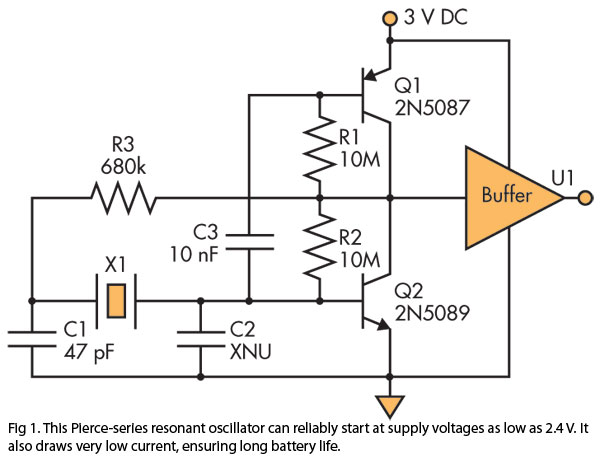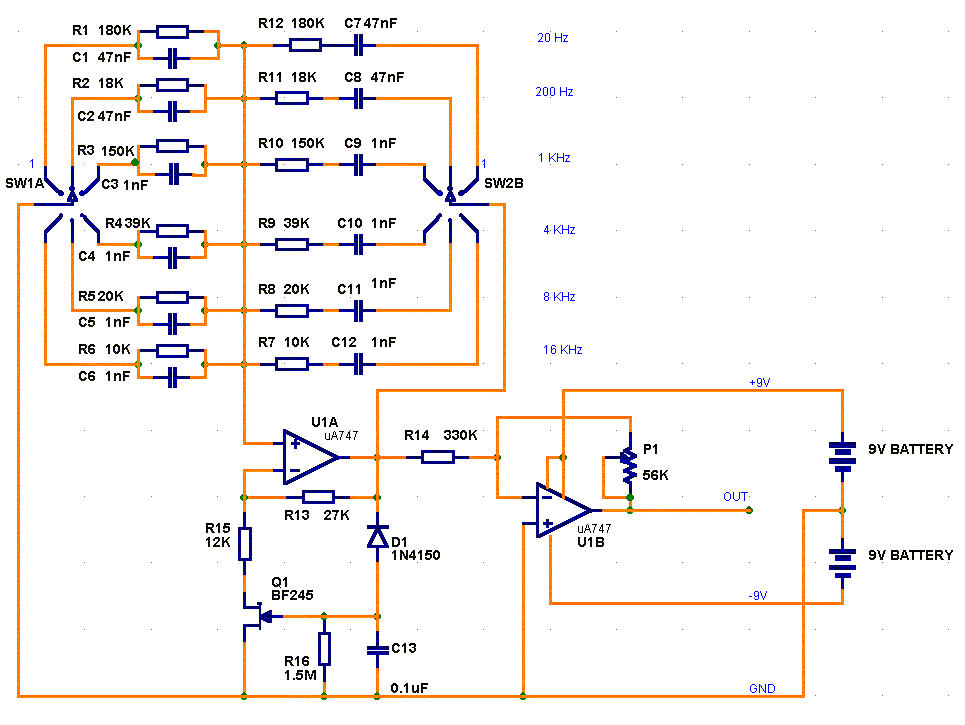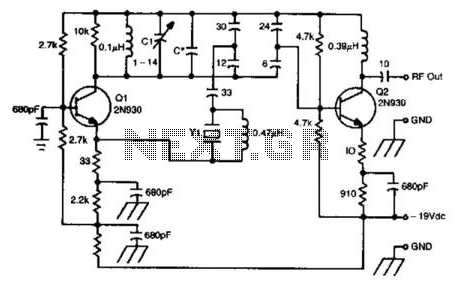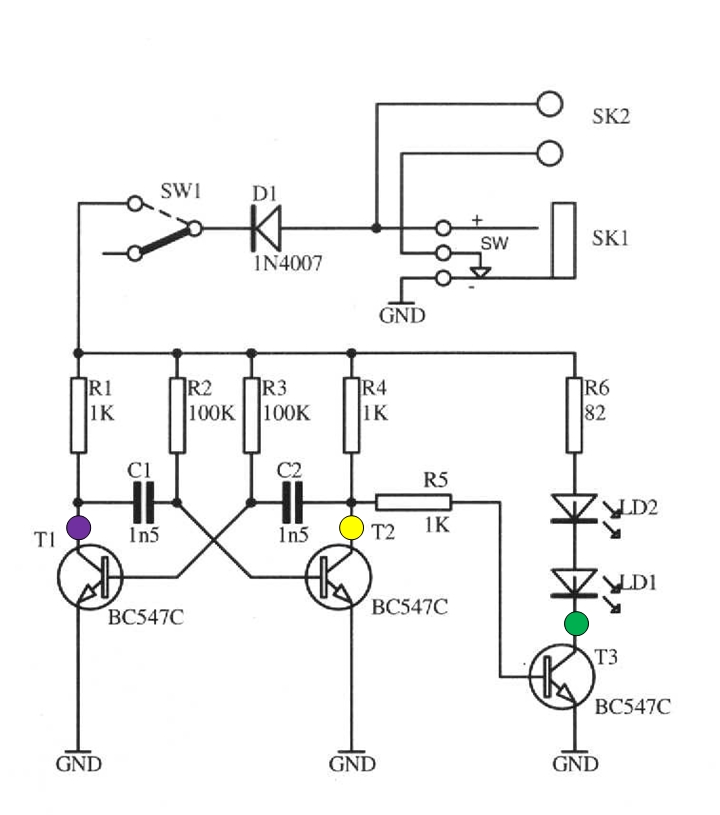
Colpitts oscillator

Edwin Henry Colpitts was a communications pioneer best known for his invention of the Colpitts oscillator. As research branch chief for Western Electric in the early 1900s, he and scientists under his direction achieved significant advances in the development of oscillators and vacuum tubes. An electronic oscillator is an electronic circuit that produces a repetitive electronic signal, often a sine wave or a square wave. They are widely used in numerous electronic devices. In electromagnetism and electronics, inductance is the ability of an inductor to store energy in a magnetic field. Inductors generate an opposing voltage proportional to the rate of change in current in a circuit. A capacitor is a passive two-terminal electrical component used to store energy in an electric field. The forms of practical capacitors vary widely, but all contain at least two electrical conductors separated by a dielectric; for example, one common construction consists of metal foils separated. Feedback describes the situation when output from an event or phenomenon in the past influences an occurrence or occurrences of the same event.
The Colpitts oscillator is a significant electronic circuit invented by Edwin Henry Colpitts, characterized by its simplicity and efficiency. It employs a single inductor and two capacitors arranged in a specific configuration to generate oscillations. The frequency of the output signal is determined by the values of the inductor and capacitors used in the circuit. The basic structure consists of a tank circuit, which is a combination of the inductor and capacitors, that resonates at a particular frequency. The feedback mechanism in the Colpitts oscillator is crucial; it allows a portion of the output signal to return to the input, sustaining oscillations.
In practice, the Colpitts oscillator is widely utilized in various applications, such as radio frequency generation, signal processing, and clock generation in digital circuits. The design can be easily adjusted to achieve the desired frequency by changing the values of the components, making it a versatile choice for engineers. The oscillator's performance is influenced by factors such as component quality, power supply stability, and the layout of the circuit board.
The Colpitts oscillator operates on the principle of inductance and capacitance, where the inductor stores energy in a magnetic field and the capacitors store energy in an electric field. The interaction between these two components generates a continuous oscillation. This oscillator is often compared to the Hartley oscillator, which uses a different configuration of inductors and capacitors to achieve similar results. However, the Colpitts oscillator is preferred in many applications for its simplicity and ease of tuning.
Overall, the contributions of Edwin Henry Colpitts to the field of electronics, particularly through the invention of the Colpitts oscillator, have had a lasting impact on communication technologies and electronic circuit design.Edwin Henry Colpitts was a communications pioneer best known for his invention of the Colpitts oscillator. As research branch chief for Western Electric in the early 1900s, he and scientists under his direction achieved significant advances in the development of oscillators and vacuum tube.
An electronic oscillator is an electronic circuit that pr oduces a repetitive electronic signal, often a sine wave or a square wave. They are widely used in innumerable electronic devices. In electromagnetism and electronics, inductance is the ability of an inductor to store energy in a magnetic field. Inductors generate an opposing voltage proportional to the rate of change in current in a circuit. A capacitor is a passive two-terminal electrical component used to store energy in an electric field.
The forms of practical capacitors vary widely, but all contain at least two electrical conductors separated by a dielectric ; for example, one common construction consists of metal foils separated. Feedback describes the situation when output from an event or phenomenon in the past will influence an occurrence or occurrences of the same Feedback describes the situation when output from (or information about the result of) an event or phenomenon in the past will influence an occurrence or.
A capacitor is a passive two-terminal electrical component used to store energy in an electric field. The forms of practical capacitors vary widely, but all contain at least two electrical conductors separated by a dielectric ; for example, one common construction consists of metal foils separated.
An electronic oscillator is an electronic circuit that produces a repetitive electronic signal, often a sine wave or a square wave. They are widely used in innumerable electronic devices. Edwin Henry Colpitts was a communications pioneer best known for his invention of the Colpitts oscillator.
As research branch chief for Western Electric in the early 1900s, he and scientists under his direction achieved significant advances in the development of oscillators and vacuum tube. An electronic oscillator is an electronic circuit that produces a repetitive electronic signal, often a sine wave or a square wave.
They are widely used in innumerable electronic devices. In electromagnetism and electronics, inductance is the ability of an inductor to store energy in a magnetic field. Inductors generate an opposing voltage proportional to the rate of change in current in a circuit. A capacitor is a passive two-terminal electrical component used to store energy in an electric field.
The forms of practical capacitors vary widely, but all contain at least two electrical conductors separated by a dielectric ; for example, one common construction consists of metal foils separated. Feedback describes the situation when output from an event or phenomenon in the past will influence an occurrence or occurrences of the same Feedback describes the situation when output from (or information about the result of) an event or phenomenon in the past will influence an occurrence or.
A capacitor is a passive two-terminal electrical component used to store energy in an electric field. The forms of practical capacitors vary widely, but all contain at least two electrical conductors separated by a dielectric ; for example, one common construction consists of metal foils separated.
s in series. One of the advantages of this circuit is its simplicity; it needs only a single inductor. Colpitts obtained US Patent 1624537 for this circuit. The Hartley oscillator is an electronic oscillator circuit that uses an inductor and a capacitor in parallel to determine the frequency. Invented in 1915 by American engineer Ralph Hartley, the distinguishing feature of the Hartley circuit is that the feedback needed for oscillation is taken from.
A capacitor is a passive two-terminal electrical component used to store energy in an electric field. The forms 🔗 External reference
The Colpitts oscillator is a significant electronic circuit invented by Edwin Henry Colpitts, characterized by its simplicity and efficiency. It employs a single inductor and two capacitors arranged in a specific configuration to generate oscillations. The frequency of the output signal is determined by the values of the inductor and capacitors used in the circuit. The basic structure consists of a tank circuit, which is a combination of the inductor and capacitors, that resonates at a particular frequency. The feedback mechanism in the Colpitts oscillator is crucial; it allows a portion of the output signal to return to the input, sustaining oscillations.
In practice, the Colpitts oscillator is widely utilized in various applications, such as radio frequency generation, signal processing, and clock generation in digital circuits. The design can be easily adjusted to achieve the desired frequency by changing the values of the components, making it a versatile choice for engineers. The oscillator's performance is influenced by factors such as component quality, power supply stability, and the layout of the circuit board.
The Colpitts oscillator operates on the principle of inductance and capacitance, where the inductor stores energy in a magnetic field and the capacitors store energy in an electric field. The interaction between these two components generates a continuous oscillation. This oscillator is often compared to the Hartley oscillator, which uses a different configuration of inductors and capacitors to achieve similar results. However, the Colpitts oscillator is preferred in many applications for its simplicity and ease of tuning.
Overall, the contributions of Edwin Henry Colpitts to the field of electronics, particularly through the invention of the Colpitts oscillator, have had a lasting impact on communication technologies and electronic circuit design.Edwin Henry Colpitts was a communications pioneer best known for his invention of the Colpitts oscillator. As research branch chief for Western Electric in the early 1900s, he and scientists under his direction achieved significant advances in the development of oscillators and vacuum tube.
An electronic oscillator is an electronic circuit that pr oduces a repetitive electronic signal, often a sine wave or a square wave. They are widely used in innumerable electronic devices. In electromagnetism and electronics, inductance is the ability of an inductor to store energy in a magnetic field. Inductors generate an opposing voltage proportional to the rate of change in current in a circuit. A capacitor is a passive two-terminal electrical component used to store energy in an electric field.
The forms of practical capacitors vary widely, but all contain at least two electrical conductors separated by a dielectric ; for example, one common construction consists of metal foils separated. Feedback describes the situation when output from an event or phenomenon in the past will influence an occurrence or occurrences of the same Feedback describes the situation when output from (or information about the result of) an event or phenomenon in the past will influence an occurrence or.
A capacitor is a passive two-terminal electrical component used to store energy in an electric field. The forms of practical capacitors vary widely, but all contain at least two electrical conductors separated by a dielectric ; for example, one common construction consists of metal foils separated.
An electronic oscillator is an electronic circuit that produces a repetitive electronic signal, often a sine wave or a square wave. They are widely used in innumerable electronic devices. Edwin Henry Colpitts was a communications pioneer best known for his invention of the Colpitts oscillator.
As research branch chief for Western Electric in the early 1900s, he and scientists under his direction achieved significant advances in the development of oscillators and vacuum tube. An electronic oscillator is an electronic circuit that produces a repetitive electronic signal, often a sine wave or a square wave.
They are widely used in innumerable electronic devices. In electromagnetism and electronics, inductance is the ability of an inductor to store energy in a magnetic field. Inductors generate an opposing voltage proportional to the rate of change in current in a circuit. A capacitor is a passive two-terminal electrical component used to store energy in an electric field.
The forms of practical capacitors vary widely, but all contain at least two electrical conductors separated by a dielectric ; for example, one common construction consists of metal foils separated. Feedback describes the situation when output from an event or phenomenon in the past will influence an occurrence or occurrences of the same Feedback describes the situation when output from (or information about the result of) an event or phenomenon in the past will influence an occurrence or.
A capacitor is a passive two-terminal electrical component used to store energy in an electric field. The forms of practical capacitors vary widely, but all contain at least two electrical conductors separated by a dielectric ; for example, one common construction consists of metal foils separated.
s in series. One of the advantages of this circuit is its simplicity; it needs only a single inductor. Colpitts obtained US Patent 1624537 for this circuit. The Hartley oscillator is an electronic oscillator circuit that uses an inductor and a capacitor in parallel to determine the frequency. Invented in 1915 by American engineer Ralph Hartley, the distinguishing feature of the Hartley circuit is that the feedback needed for oscillation is taken from.
A capacitor is a passive two-terminal electrical component used to store energy in an electric field. The forms 🔗 External reference
